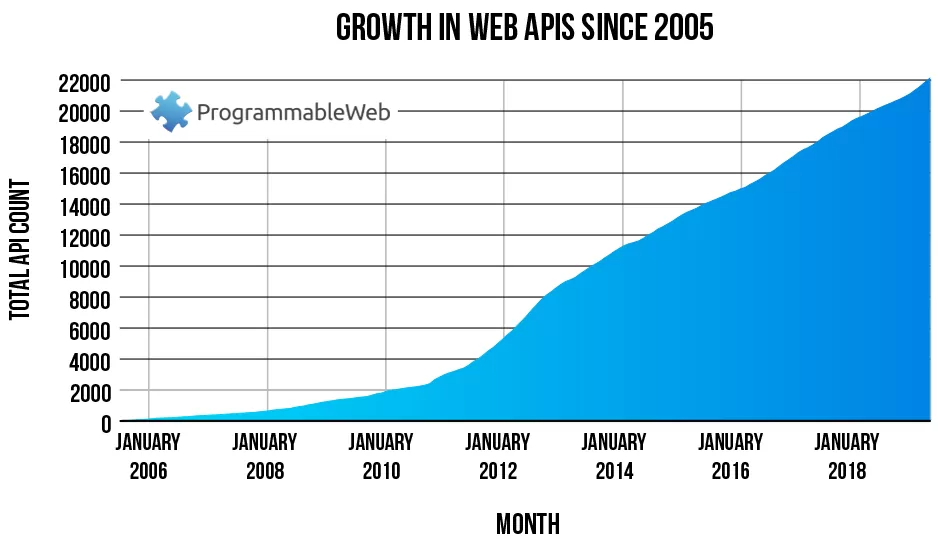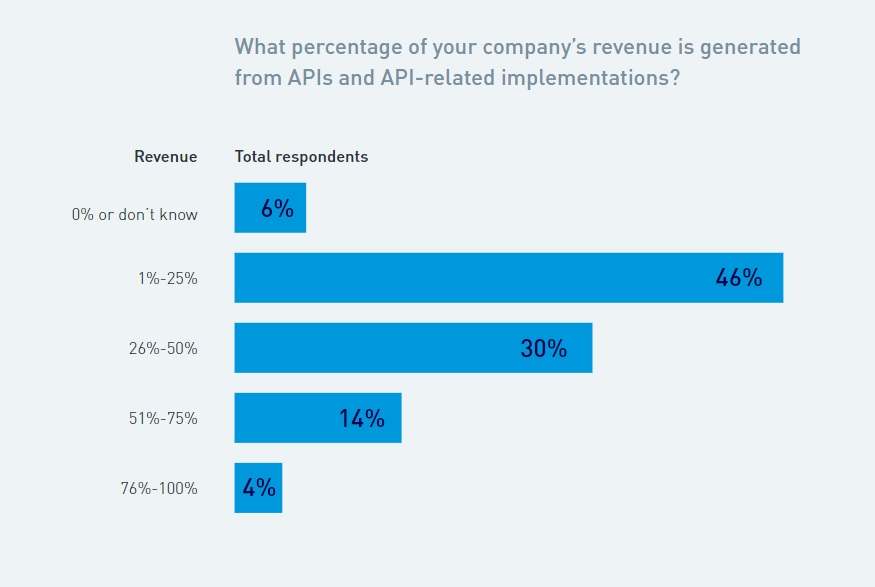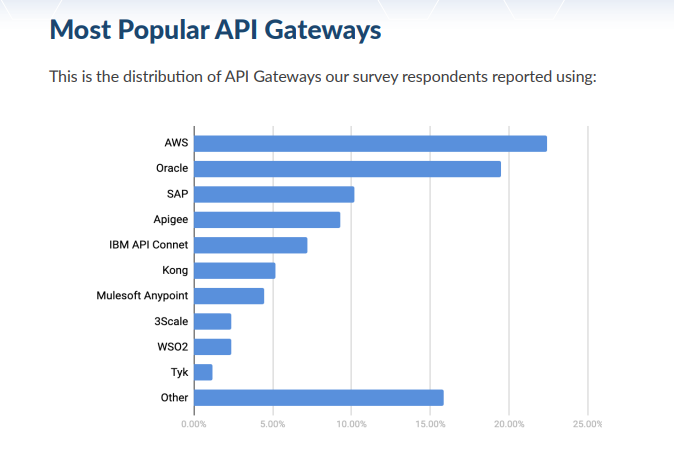Have you ever wondered how your smartphone accesses all the information it does? Weather, geolocations, bank accounts, news, etc. The device doesn’t store the information, neither does the app that allows you to search for and book tickets, find lodging, rent a car, or call a taxi. So where does all the info come from?
Simply put, constant temperature updates in your weather widget are a result of an exchange between two software programs. A widget is connected with a weather service like Weather.com, allowing it to source weather freely via an Application Programming Interface or API. And this is mainly how applications work today, as APIs are used everywhere to establish connections between parts of a single app, two different applications, or databases.
With the overall connectivity, sharing access to corporate services and sources via an API became a part of a business. And managing APIs that open this access, gave birth to a new term — the API economy. Here, we’ll dive into the topic to define what the API Economy is, why you should care, and how companies changed the way they operate because of it.
But first, what is an API? For those of you far removed from the tech world, an API is a channel of communication between two software programs. These channels include their own rules on how applications can exchange data, access each other’s functionality, or use resources. Generally, data exchange is request-based, so programs exchange data by making an API call, starting a session to use the service.
So, the term API usually means two things:
What is API
API architectures comparison
API testing approaches
Around since the 60s, APIs are nothing new. But only since the beginning of 2000s have they drastically changed the way applications were built. Transforming from a simple tool to share data, the integration became a service itself, spreading the applications built on top of the functionality provided by APIs. The most prominent example is how Uber managed to utilize the real-time tracking feature of the Google Maps API for its car-hailing services.
With the rise of microservices, cloud and cloudless technologies, and the Internet of Things, APIs became a common in application architecture. Breaking monolithic apps into a set of services communicating by APIs made them more lightweight, while access to the data became much easier. So, this opened up new possibilities to integrate apps with each other or build new ones based on the provided API.

Mechanisms of monetization differ, as the company is free to decide whether it will provide its API as an open one or charge for its usage. Or maybe it will monetize through the content sourced via the API channel. One way or another, this gave birth to a new type of marketing – B2D (Business to Developers). And the practice of managing corporate resources in the paradigm of APIs was named the API economy.
As an example, take a look at Expedia.com, one of the largest booking platforms that by 2013 was already generating around $2 billion in revenue via their affiliate network, 90 percent of which came from partner API usage. Letting other businesses integrate Expedia’s booking functionality and content automatically turned it into an API platform. Which is a pretty common thing: eBay managed to generate 60 percent of its revenue, while Salesforce raised 50 percent according to the same 2015 stats by Harvard Business Review. Facebook, Twitter, Instagram, any social media today offers its API.
The main reason the term API economy broke out is that organizations of any size can actually benefit from it. A more recent report by MuleSoft shows that, among enterprise IT leaders, on average companies generate 31 percent of revenue via APIs or services implemented with their use.

API providers. This is a category of companies that develop API and extract value from sharing access to it. Providers refer to the aggregation of corporate resources by opening their proprietary systems to generate revenue.
Developer market. A developer community or companies that use a provided API can be referred to as consumers in this case.
API infrastructure providers. Besides previously mentioned players, there are also companies that take part indirectly. The API Economy requires investing in the API infrastructure, development of stable and mature channels, and API management systems (gateways). Most enterprise APIs are deployed via these systems, so providers like AWS or Oracle have their place here as well.
So, if you’re wondering if it's time to rush into building APIs, probably the answer is yes. At the same time, there are no clear instructions on how to step into API economy, as it depends on multiple factors, similar to developing a product strategy and launching a product on the market. But we’ll give you some basic steps to prepare for API economy. Define the value proposition. An API can be seen as a product, but the value it brings may not be clear for the consumer market, or it can be highly specific. Understanding your value and clearly stating it to the market will make your API required.
Develop an API strategy. This refers to your general planning and allocation of corporate resources. You will need to understand what data you share as well as how and to whom you open access. The strategy should also include how you want to distribute and manage your APIs. More tactical things are also covered in the strategy, like the choice of API protocol (SOAP or REST), or messaging language (XML or JSON).
Choose a reliable API gateway. API economy is often used interchangeably with the term API management. This mostly refers to the implementation of management systems called API gateways that allow companies to govern and update APIs. So you may need to scan through the popular systems, if you haven’t chosen one yet.

So, for the consumer market, there is a number of benefits:
You may also check one of our articles that categories specific APIs by the industry or purpose:
Rail booking
Medicine and drug data
APIs for online travel and tourism providers
SOAP vs REST vs RPC vs GraphQL
Image recognition
Car rental
Flight booking
Public transportation
Hotel channel management
Simply put, constant temperature updates in your weather widget are a result of an exchange between two software programs. A widget is connected with a weather service like Weather.com, allowing it to source weather freely via an Application Programming Interface or API. And this is mainly how applications work today, as APIs are used everywhere to establish connections between parts of a single app, two different applications, or databases.
With the overall connectivity, sharing access to corporate services and sources via an API became a part of a business. And managing APIs that open this access, gave birth to a new term — the API economy. Here, we’ll dive into the topic to define what the API Economy is, why you should care, and how companies changed the way they operate because of it.
What is API Economy?
API economy is a term denoting a new way of distributing software and data. Unlike the traditional way, application functions are exposed to other applications, rather than to end users. This is made possible by web public APIs that allow developers to integrate the functionality of one application into another.But first, what is an API? For those of you far removed from the tech world, an API is a channel of communication between two software programs. These channels include their own rules on how applications can exchange data, access each other’s functionality, or use resources. Generally, data exchange is request-based, so programs exchange data by making an API call, starting a session to use the service.
So, the term API usually means two things:
- The actual code of a software interface
- A set of documentation and specifications defining the rules on how the interface should work, API call terms, data transmission rules, etc.
- Database API. This type helps connect the databases and the database management system.
- OS API. They are intended to provide access to the operating system’s resources and functionality. E.g. Cocoa for MacOS.
- Remote API. These provide connectivity between applications on two (or more) different devices. E.g. Java Remote Method Invocation.
- Web service API. Data transfer for web-based apps and services, like PayPal or Google Maps, these are the core of the API economy as these APIs are usually shared as public.
What is API
API architectures comparison
API testing approaches
Around since the 60s, APIs are nothing new. But only since the beginning of 2000s have they drastically changed the way applications were built. Transforming from a simple tool to share data, the integration became a service itself, spreading the applications built on top of the functionality provided by APIs. The most prominent example is how Uber managed to utilize the real-time tracking feature of the Google Maps API for its car-hailing services.
With the rise of microservices, cloud and cloudless technologies, and the Internet of Things, APIs became a common in application architecture. Breaking monolithic apps into a set of services communicating by APIs made them more lightweight, while access to the data became much easier. So, this opened up new possibilities to integrate apps with each other or build new ones based on the provided API.
The impact of API economy on businesses
The diverse possibilities an API gives in terms of integrating applications with each other made it increasingly popular. Currently there are more than 23,000 web-based APIs available in the ProgrammableWeb directory.
Web API growth since 2005 up to 2019
Source: ProgrammableWeb.com
More importantly, this allowed third parties to utilize shared resources and build applications on top of APIs. Which led to a new market condition for many industries, pushing companies to modify their business model, as an API itself now became a product.Mechanisms of monetization differ, as the company is free to decide whether it will provide its API as an open one or charge for its usage. Or maybe it will monetize through the content sourced via the API channel. One way or another, this gave birth to a new type of marketing – B2D (Business to Developers). And the practice of managing corporate resources in the paradigm of APIs was named the API economy.
As an example, take a look at Expedia.com, one of the largest booking platforms that by 2013 was already generating around $2 billion in revenue via their affiliate network, 90 percent of which came from partner API usage. Letting other businesses integrate Expedia’s booking functionality and content automatically turned it into an API platform. Which is a pretty common thing: eBay managed to generate 60 percent of its revenue, while Salesforce raised 50 percent according to the same 2015 stats by Harvard Business Review. Facebook, Twitter, Instagram, any social media today offers its API.
The main reason the term API economy broke out is that organizations of any size can actually benefit from it. A more recent report by MuleSoft shows that, among enterprise IT leaders, on average companies generate 31 percent of revenue via APIs or services implemented with their use.

Percentage of revenue generated via APIs split by respondents
Source: mulesoft.com
There are three distinctive parties existing in terms of the API economy:API providers. This is a category of companies that develop API and extract value from sharing access to it. Providers refer to the aggregation of corporate resources by opening their proprietary systems to generate revenue.
Developer market. A developer community or companies that use a provided API can be referred to as consumers in this case.
API infrastructure providers. Besides previously mentioned players, there are also companies that take part indirectly. The API Economy requires investing in the API infrastructure, development of stable and mature channels, and API management systems (gateways). Most enterprise APIs are deployed via these systems, so providers like AWS or Oracle have their place here as well.
How to benefit from API economy
2017 was announced as a year of API economy. As the hype calmed down, using third-party APIs is taken for granted. The benefits depend on how you can manage your value proposition through APIs and take on omnichannel sales. Scanning through the list of most popular web APIs by RapidAPI, we can clearly see all the industry diversity of databases and services available. That proves the point that the API economy will continue to grow, forcing businesses into digital transformation.So, if you’re wondering if it's time to rush into building APIs, probably the answer is yes. At the same time, there are no clear instructions on how to step into API economy, as it depends on multiple factors, similar to developing a product strategy and launching a product on the market. But we’ll give you some basic steps to prepare for API economy. Define the value proposition. An API can be seen as a product, but the value it brings may not be clear for the consumer market, or it can be highly specific. Understanding your value and clearly stating it to the market will make your API required.
Develop an API strategy. This refers to your general planning and allocation of corporate resources. You will need to understand what data you share as well as how and to whom you open access. The strategy should also include how you want to distribute and manage your APIs. More tactical things are also covered in the strategy, like the choice of API protocol (SOAP or REST), or messaging language (XML or JSON).
Choose a reliable API gateway. API economy is often used interchangeably with the term API management. This mostly refers to the implementation of management systems called API gateways that allow companies to govern and update APIs. So you may need to scan through the popular systems, if you haven’t chosen one yet.

API gateway providers’ market share by RapidAPI developer survey 2019-2020
Source: rapidapi.com
Keep data security in mind. This goes to general strategic planning, but we want to emphasize it. Data security is probably one of the major concerns when it comes to the API economy and the open nature of the corporate resources. Address these problems through proper API testing and management.API directories and marketplaces
Considering the growing number of APIs and rising demand among the users, API directories were created to search and filter them by use cases, purposes, or domains. API providers may publish their APIs with the documentation, so that consumers can find them more easily. In the list below you will find some of the known API directories:- ProgrammableWeb. This largest repository includes approximately a thousand categories you can filter by. To publish one, check this link.
- RapidAPI. An API marketplace that offers API collections by categories and recommendations based on preferences.
- Github. Well known software development hosting, this is where you can find APIs among other software projects.
- io. This is an experimental open-source API directory with a simple search feature and publishing capability.
- Apis.guru. An open-source directory accessible through a single REST API, it features only public APIs.
API economy for consumers
For the development communities, represented by individuals, startups, and mature software companies, the API economy opens up endless integration opportunities. The more companies aggregate their data and open services, the more resources are out there to use in app development.So, for the consumer market, there is a number of benefits:
- Faster development and decreased time to market, as API’s basically give the access to unlimited functionality that is easy to integrate with. More importantly, some of the functionality comes as a ready-made part of a software. So, sometimes a provided API may eliminate the need to develop a feature on your own.
- Implement features of third-party services. Think of cloud-based machine learning services, databases, social networks, or meta-searches that offer their APIs for developers. All of this functionality enhances the user experience, making it more valuable for the end user.
- Provide more data as APIs were initially meant to be used. This allows an end user to access the required data without switching between the platforms or applications.
You may also check one of our articles that categories specific APIs by the industry or purpose:
Rail booking
Medicine and drug data
APIs for online travel and tourism providers
SOAP vs REST vs RPC vs GraphQL
Image recognition
Car rental
Flight booking
Public transportation
Hotel channel management

